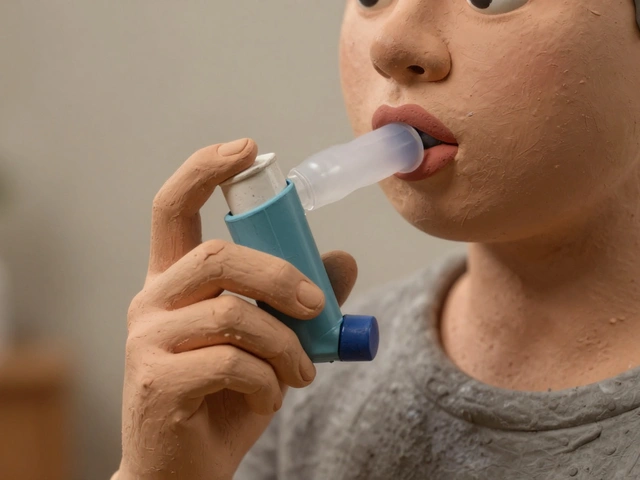This guide explores eight alternatives to Ventolin inhalers available in 2024, offering insights into their effectiveness, availability, and user suitability. Discover options like ProAir HFA, Xopenex, and Atrovent, each serving unique needs for those managing asthma or exercise-induced bronchospasm. The article provides a detailed look at the pros and cons of each alternative, helping readers make informed choices. Additionally, a comparative table is included to highlight key differences and make selection easier.
Asthma Inhalers: Types, Use, and How to Choose
Most people with asthma rely on two kinds of inhalers: a fast-acting rescue inhaler for sudden symptoms and a daily controller to prevent flare-ups. Knowing the difference, how to use each device, and how to buy them safely makes breathing easier and avoids emergencies.
Here’s a plain, useful rundown you can use today.
Know the main types
Think in two groups: quick-relief and long-term control.
Quick-relief (rescue) inhalers stop symptoms fast. They contain short-acting bronchodilators. Use one when you have wheeze, tight chest, or shortness of breath.
Controller inhalers reduce inflammation and keep symptoms from coming back. They usually contain inhaled steroids or steroid/long-acting bronchodilator combos. Take these every day as prescribed, even when you feel fine.
Devices matter too. Metered-dose inhalers (MDIs) spray medicine and often work best with a spacer. Dry powder inhalers (DPIs) release medicine when you inhale sharply. Soft-mist inhalers make a slow-moving mist that’s easier to inhale for some people. Your doctor will help pick the right one for you.
How to use your inhaler correctly
Bad technique is the most common reason inhalers fail. Here are simple, clear steps for MDIs and DPIs.
MDI with spacer:
- Shake the inhaler and attach the spacer.
- Exhale fully, put the spacer mouthpiece in your mouth, and press the canister while inhaling slowly.
- Hold your breath for 5–10 seconds, then breathe out slowly.
- If a second puff is needed, wait 20–30 seconds and repeat.
DPI:
- Load the dose per the device instructions.
- Exhale away from the device, then inhale quickly and deeply through the mouthpiece.
- Hold your breath for a few seconds, then breathe out.
Practical tips: use a spacer if you can, rinse your mouth after steroid inhalers to prevent thrush, and watch the dose counter so you don’t run out unexpectedly.
If you’re unsure about your technique, ask a nurse or pharmacist to watch you use it. Small fixes often make a big difference.
Choosing and buying inhalers safely
You need a prescription for most inhalers. Talk openly with your doctor about symptoms, side effects, and lifestyle (sports, travel, and so on). If your inhaler keeps you symptom-free, stick with it. If you still use your rescue inhaler more than twice a week, tell your clinician — your controller plan may need change.
Buying online? Use licensed pharmacies and keep your prescription handy. Check expiry dates and storage instructions. Don’t share inhalers with others. Generics work well for many people and often cost less, but let your provider approve any switch.
Keep an asthma action plan, track rescue use, and book regular reviews with your clinician. Correct device choice and good technique usually cut symptoms and give better control fast.






